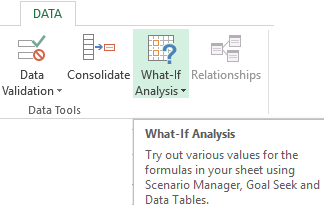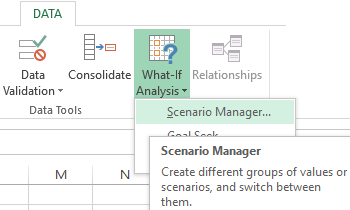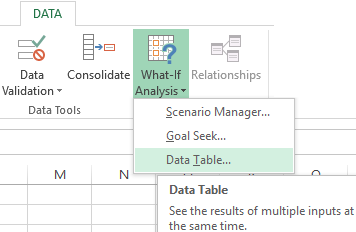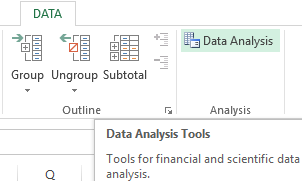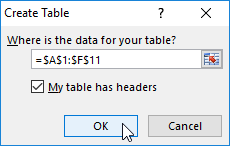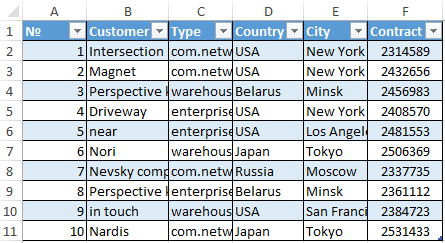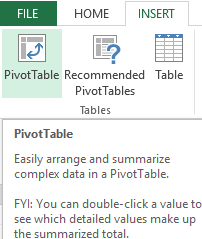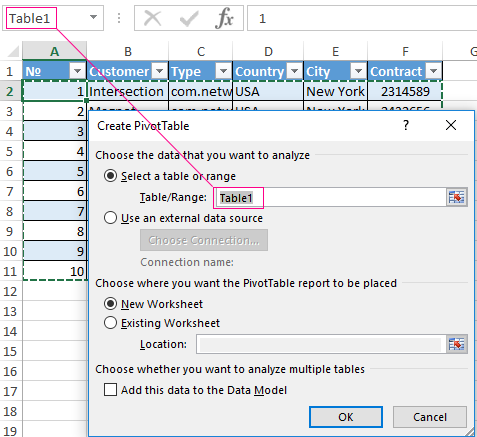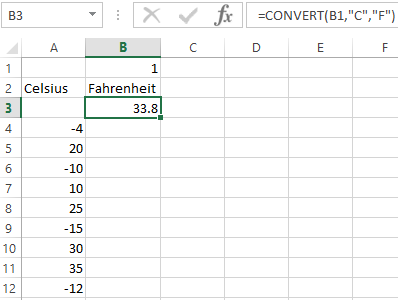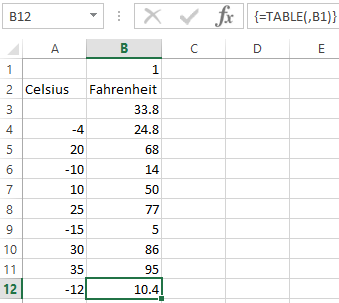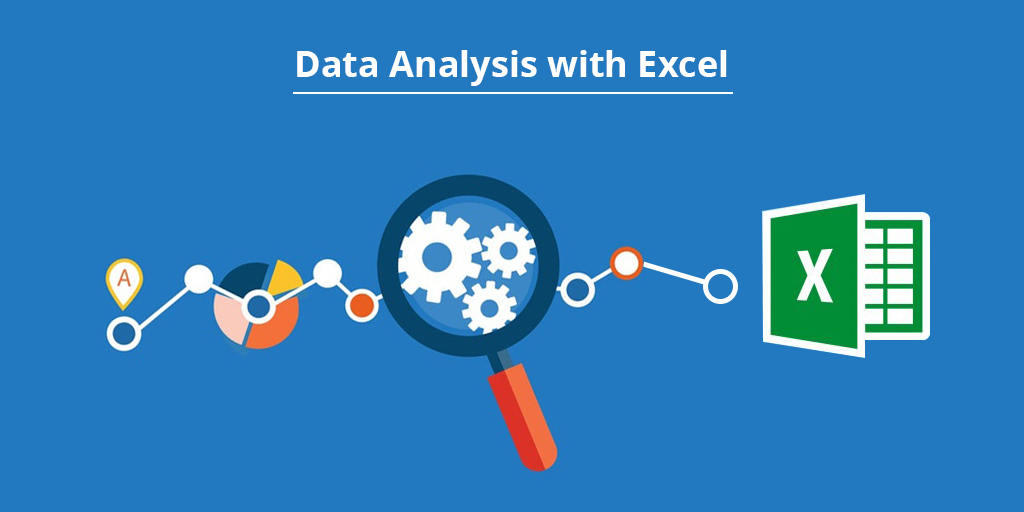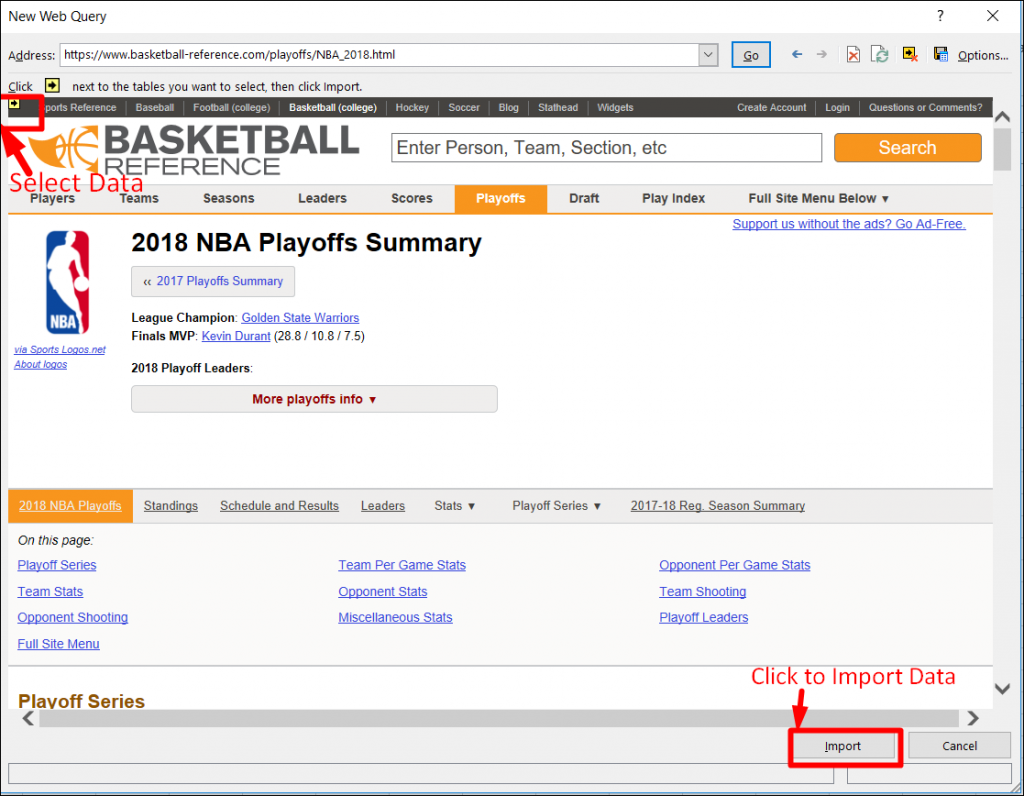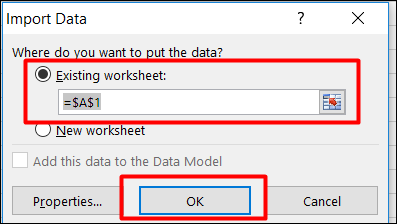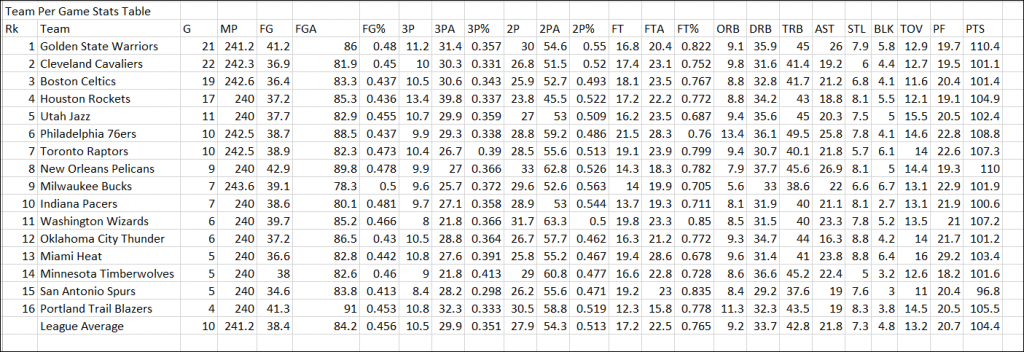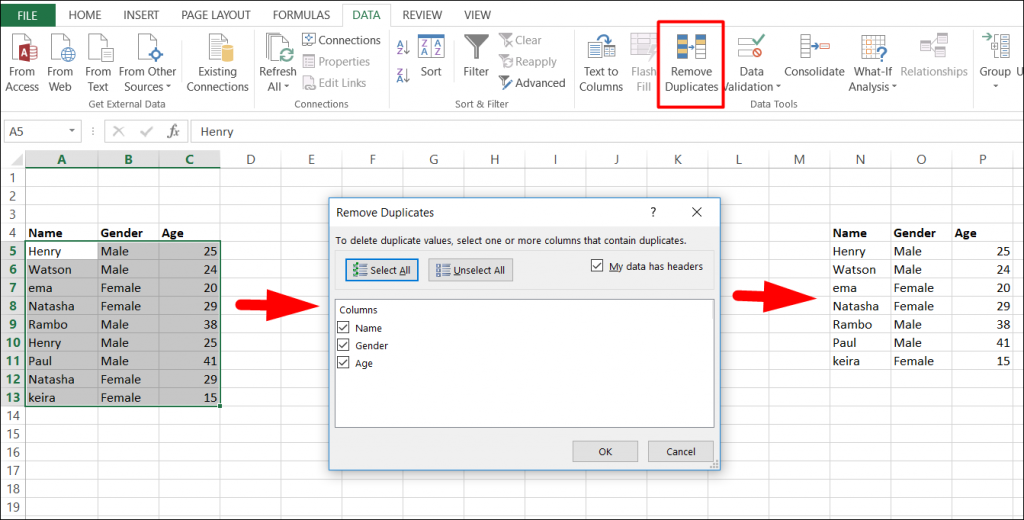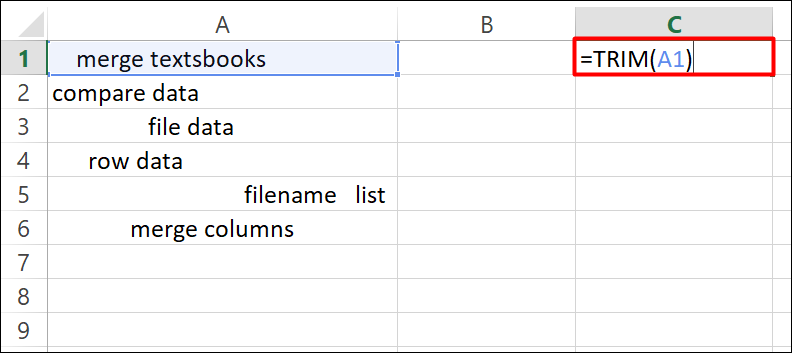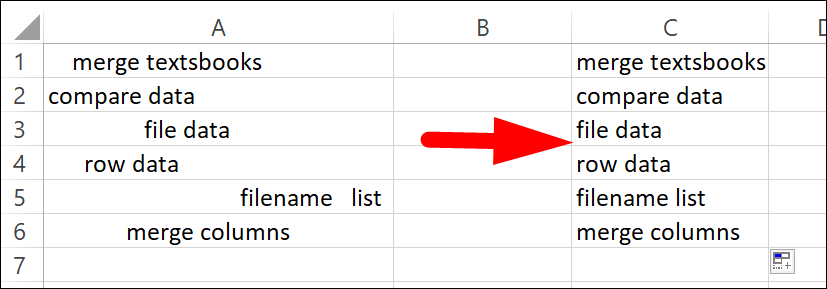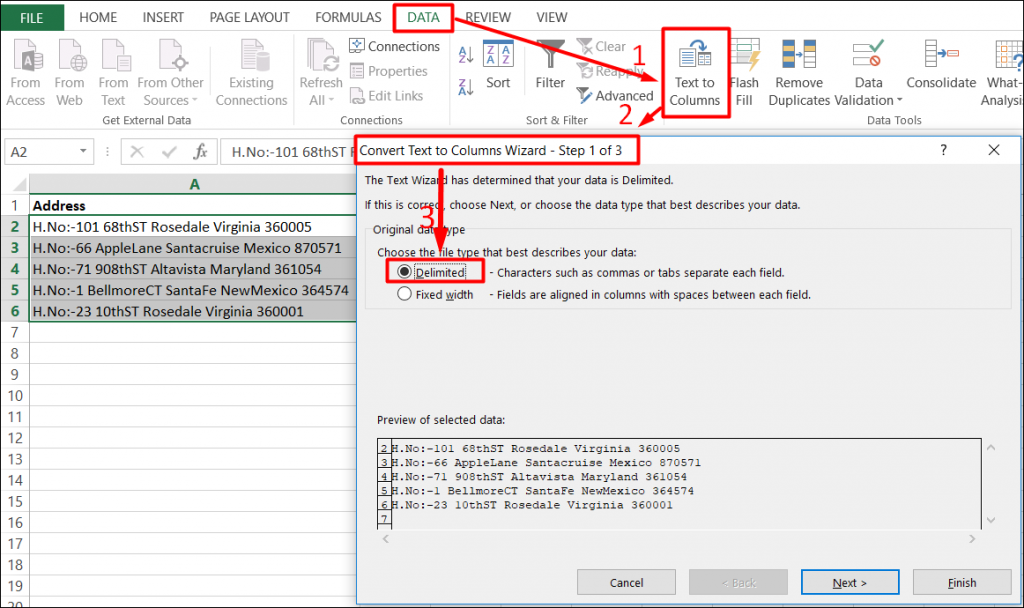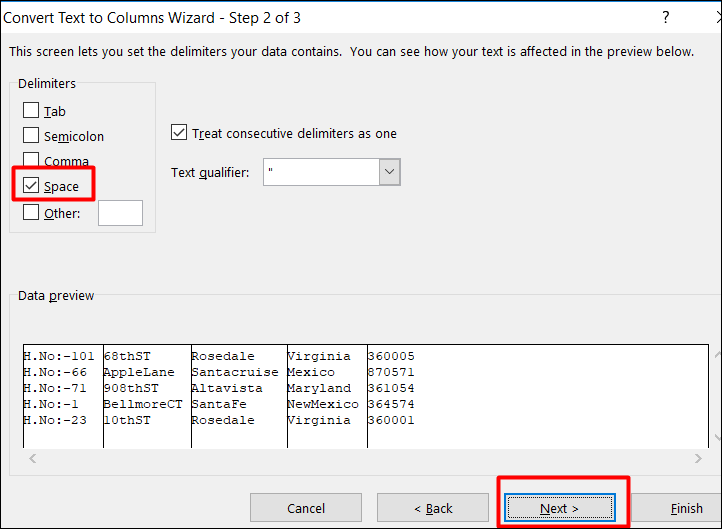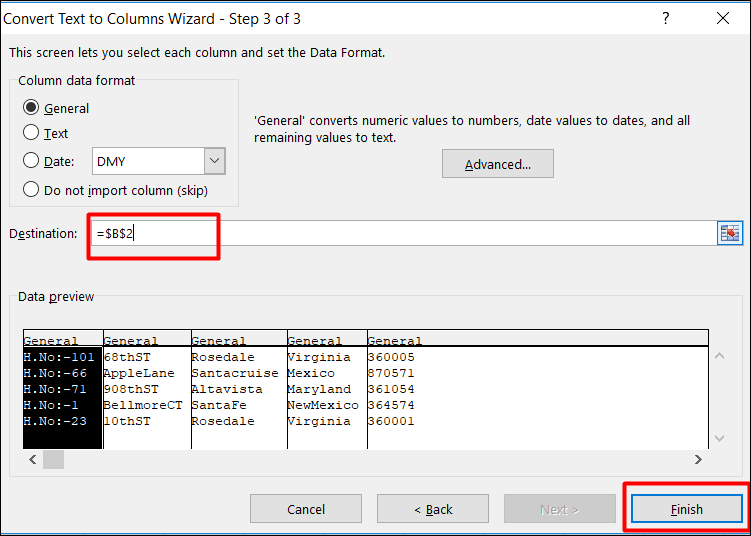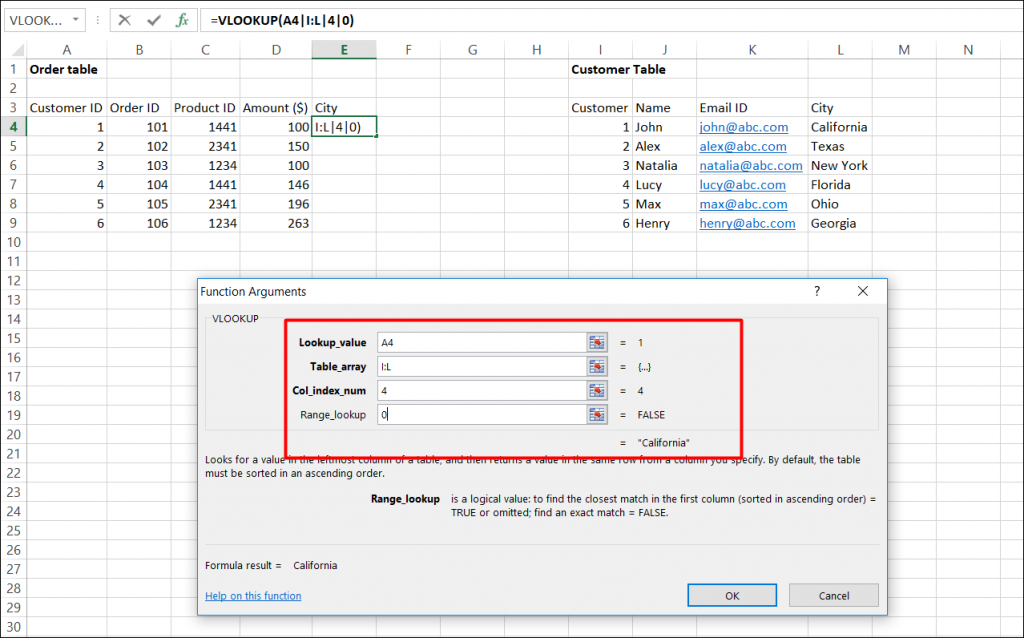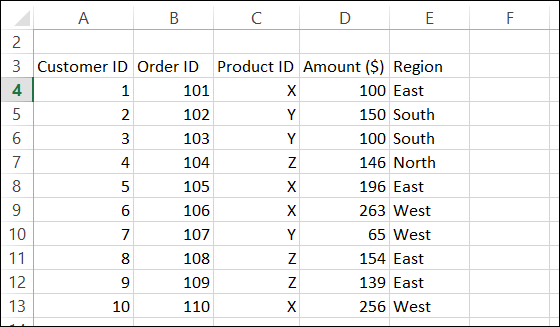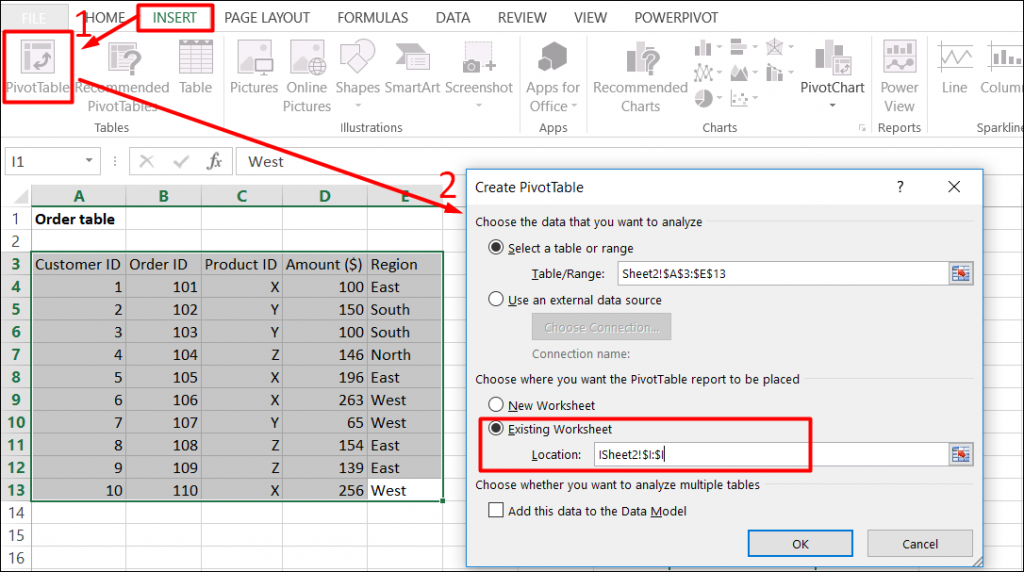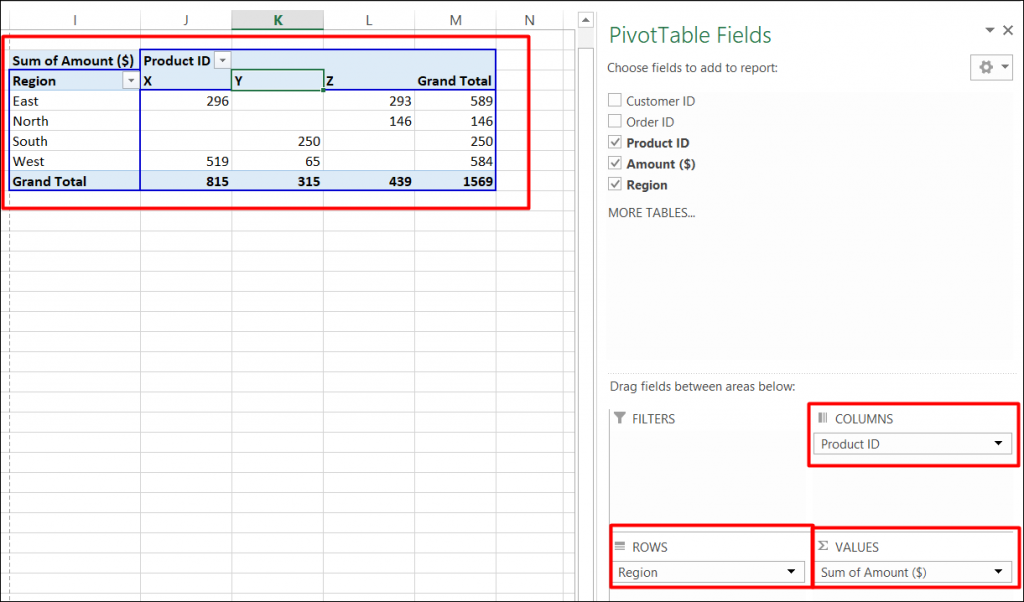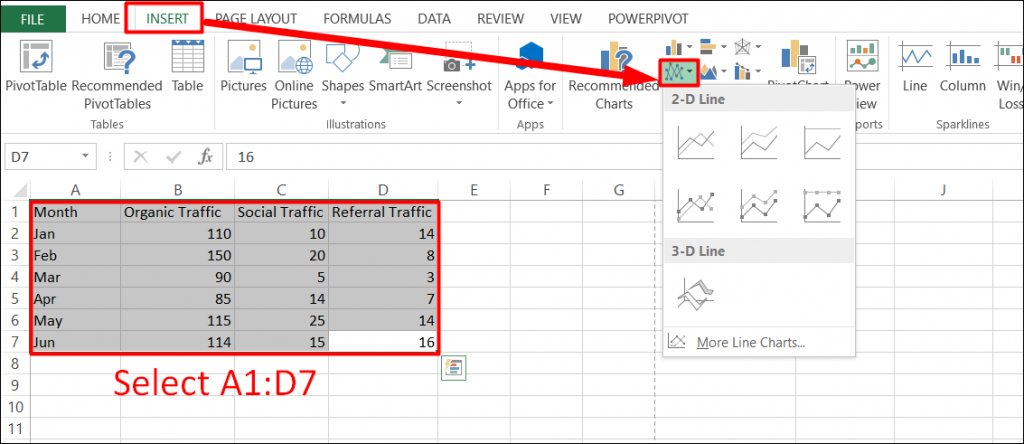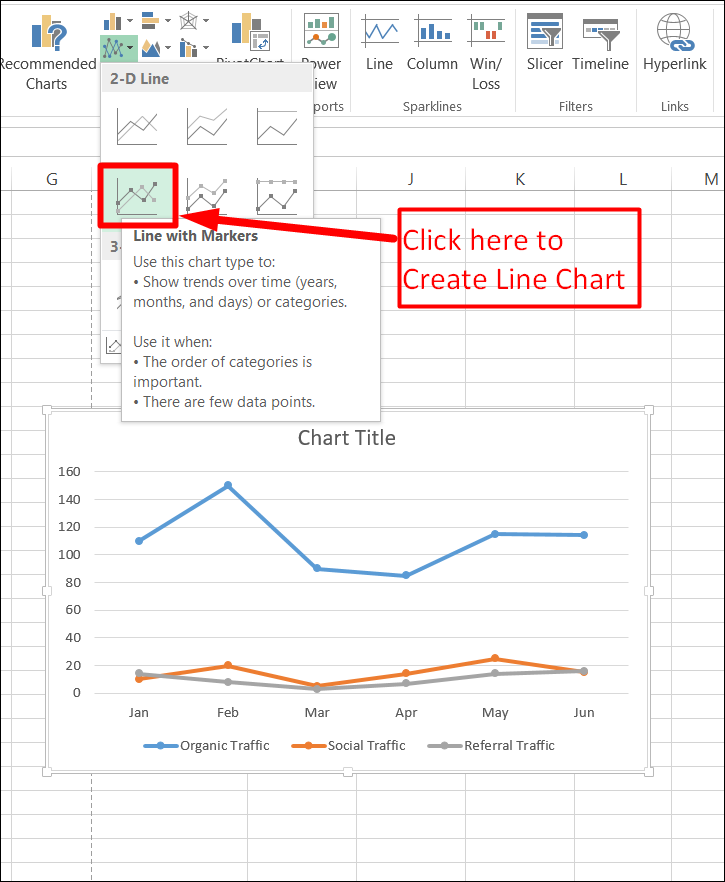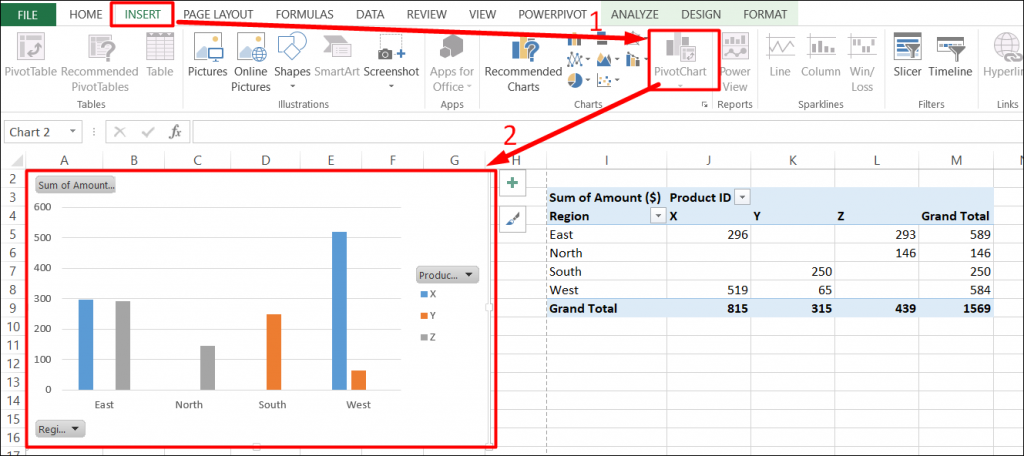IMPORTANT: Ideas in Excel is now Analyze Data
To better represent how Ideas makes data analysis simpler, faster and more intuitive, the feature has been renamed to Analyze Data. The experience and functionality is the same and still aligns to the same privacy and licensing regulations. If you’re on Semi-Annual Enterprise Channel, you may still see «Ideas» until Excel has been updated.
Analyze Data in Excel empowers you to understand your data through natural language queries that allow you to ask questions about your data without having to write complicated formulas. In addition, Analyze Data provides high-level visual summaries, trends, and patterns.
Have a question? We can answer it!
Simply select a cell in a data range > select the Analyze Data button on the Home tab. Analyze Data in Excel will analyze your data, and return interesting visuals about it in a task pane.
If you’re interested in more specific information, you can enter a question in the query box at the top of the pane, and press Enter. Analyze Data will provide answers with visuals such as tables, charts or PivotTables that can then be inserted into the workbook.
If you are interested in exploring your data, or just want to know what is possible, Analyze Data also provides personalized suggested questions which you can access by selecting on the query box.
Try Suggested Questions
Just ask your question
Select the text box at the top of the Analyze Data pane, and you’ll see a list of suggestions based on your data.

You can also enter a specific question about your data.

Notes:
-
Analyze Data is available to Microsoft 365 subscribers in English, French, Spanish, German, Simplified Chinese, and Japanese. If you are a Microsoft 365 subscriber, make sure you have the latest version of Office. To learn more about the different update channels for Office, see: Overview of update channels for Microsoft 365 apps.
-
The Natural Language Queries functionality in Analyze Data is being made available to customers on a gradual basis. It may not be available in all countries or regions at this time.
Get specific with Analyze Data
If you do not have a question in mind, in addition to Natural Language, Analyze Data analyzes and provides high-level visual summaries, trends, and patterns.
You can save time and get a more focused analysis by selecting only the fields you want to see. When you choose fields and how to summarize them, Analyze Data excludes other available data — speeding up the process and presenting fewer, more targeted suggestions. For example, you might only want to see the sum of sales by year. Or you could ask Analyze Data to display average sales by year.
Select Which fields interest you the most?
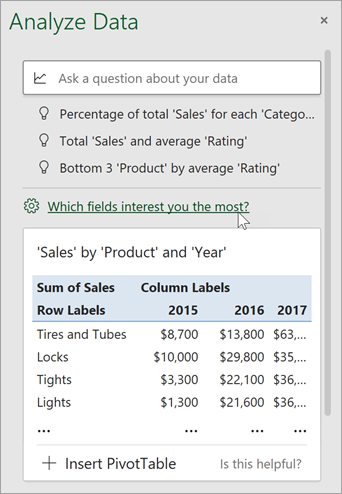
Select the fields and how to summarize their data.
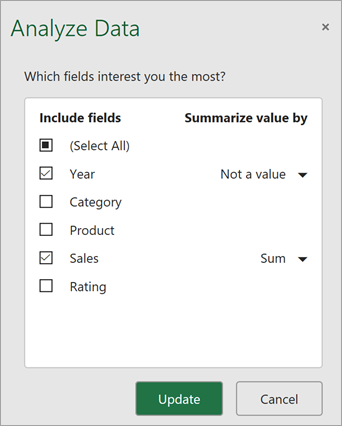
Analyze Data offers fewer, more targeted suggestions.
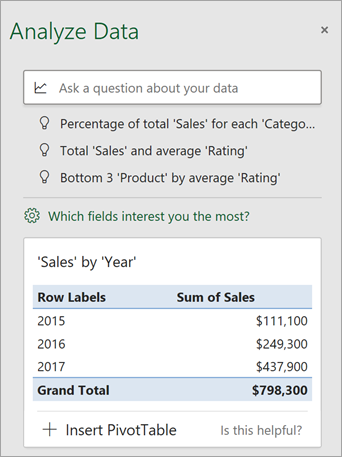
Note: The Not a value option in the field list refers to fields that are not normally summed or averaged. For example, you wouldn’t sum the years displayed, but you might sum the values of the years displayed. If used with another field that is summed or averaged, Not a value works like a row label, but if used by itself, Not a value counts unique values of the selected field.
Analyze Data works best with clean, tabular data.
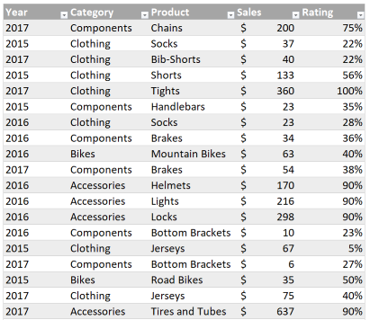
Here are some tips for getting the most out of Analyze Data:
-
Analyze Data works best with data that’s formatted as an Excel table. To create an Excel table, click anywhere in your data and then press Ctrl+T.
-
Make sure you have good headers for the columns. Headers should be a single row of unique, non-blank labels for each column. Avoid double rows of headers, merged cells, etc.
-
If you have complicated, or nested data, you can use Power Query to convert tables with cross-tabs, or multiple rows of headers.
Didn’t get Analyze Data? It’s probably us, not you.
Here are some reasons why Analyze Data may not work on your data:
-
Analyze Data doesn’t currently support analyzing datasets over 1.5 million cells. There is currently no workaround for this. In the meantime, you can filter your data, then copy it to another location to run Analyze Data on it.
-
String dates like «2017-01-01» will be analyzed as if they are text strings. As a workaround, create a new column that uses the DATE or DATEVALUE functions, and format it as a date.
-
Analyze Data won’t work when Excel is in compatibility mode (i.e. when the file is in .xls format). In the meantime, save your file as an .xlsx, .xlsm, or .xlsb file.
-
Merged cells can also be hard to understand. If you’re trying to center data, like a report header, then as a workaround, remove all merged cells, then format the cells using Center Across Selection. Press Ctrl+1, then go to Alignment > Horizontal > Center Across Selection.
Analyze Data works best with clean, tabular data.

Here are some tips for getting the most out of Analyze Data:
-
Analyze Data works best with data that’s formatted as an Excel table. To create an Excel table, click anywhere in your data and then press
+T.
-
Make sure you have good headers for the columns. Headers should be a single row of unique, non-blank labels for each column. Avoid double rows of headers, merged cells, etc.
Didn’t get Analyze Data? It’s probably us, not you.
Here are some reasons why Analyze Data may not work on your data:
-
Analyze Data doesn’t currently support analyzing datasets over 1.5 million cells. There is currently no workaround for this. In the meantime, you can filter your data, then copy it to another location to run Analyze Data on it.
-
String dates like «2017-01-01» will be analyzed as if they are text strings. As a workaround, create a new column that uses the DATE or DATEVALUE functions, and format it as a date.
-
Analyze Data can’t analyze data when Excel is in compatibility mode (i.e. when the file is in .xls format). In the meantime, save your file as an .xlsx, .xlsm, or xslb file.
-
Merged cells can also be hard to understand. If you’re trying to center data, like a report header, then as a workaround, remove all merged cells, then format the cells using Center Across Selection. Press Ctrl+1, then go to Alignment > Horizontal > Center Across Selection.
Analyze Data works best with clean, tabular data.

Here are some tips for getting the most out of Analyze Data:
-
Analyze Data works best with data that’s formatted as an Excel table. To create an Excel table, click anywhere in your data and then click Home > Tables > Format as Table.
-
Make sure you have good headers for the columns. Headers should be a single row of unique, non-blank labels for each column. Avoid double rows of headers, merged cells, etc.
Didn’t get Analyze Data? It’s probably us, not you.
Here are some reasons why Analyze Data may not work on your data:
-
Analyze Data doesn’t currently support analyzing datasets over 1.5 million cells. There is currently no workaround for this. In the meantime, you can filter your data, then copy it to another location to run Analyze Data on it.
-
String dates like «2017-01-01» will be analyzed as if they are text strings. As a workaround, create a new column that uses the DATE or DATEVALUE functions, and format it as a date.
We’re always improving Analyze Data
Even if you don’t have any of the above conditions, we may not find a recommendation. That’s because we are looking for a specific set of insight classes, and the service doesn’t always find something. We are continually working to expand the analysis types that the service supports.
Here is the current list that is available:
-
Rank: Ranks and highlights the item that is significantly larger than the rest of the items.
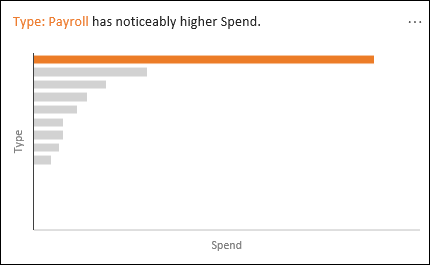
-
Trend: Highlights when there is a steady trend pattern over a time series of data.
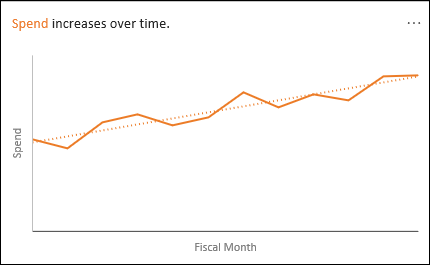
-
Outlier: Highlights outliers in time series.
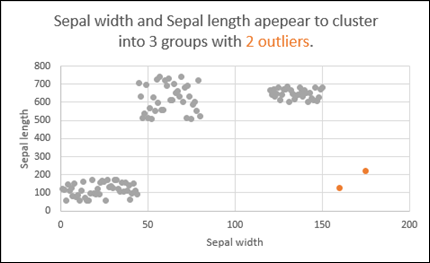
-
Majority: Finds cases where a majority of a total value can be attributed to a single factor.
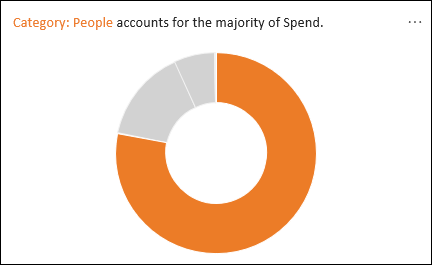
If you don’t get any results, please send us feedback by going to File > Feedback.
Because Analyze Data analyzes your data with artificial intelligence services, you might be concerned about your data security. You can read the Microsoft privacy statement for more details.
Need more help?
You can always ask an expert in the Excel Tech Community or get support in the Answers community.
Data analysis in Excel is provided by construction of a table processor. A lot of the program’s resources are suitable for solving this task.
Excel positions itself as the best universal software product in the world for processing analytical information. From a small enterprise to large corporations, managers spend a significant part of their working hours analyzing their businesses activity. Let’s consider the main analytical tools in Excel and examples of their use in practice.
Excel analysis tools
One of the most attractive data analysis is «What-if Analysis». It is located in «DATA» tab.
Analysis tools of «What-if Analysis»:
- “Scenario Manager”. It is used to generate, change and save different sets of input data and the results of calculations for a group of formulas.
- «Goal Seek». It is used when the user knows the result of the formula, but the input information for this result is unknown.
- «Data Table». Used in situations when it is necessary to show the effect of variable values on formulas in the form of a table.
«Data Analysis». This is an Excel add-in. Helps find the best solution for a particular task.
Other tools for analysis:
Analyze data in Excel using built-in functions (mathematical, financial, logical, statistical, etc.).
Summary tables in data analysis
Excel uses summary tables to simplify the viewing, processing and consolidation of data.
The program will treat the entered information as a table, but not as a simple information set. But firstly you should format lists with values according to next steps:
- Go to the «INSERT» tab and click on the «Table» button CTRL+T.
- The «Create Table» dialog box appears.
- Specify the range of data (if it already exist) or the expected range (in which cells the table will be placed).
Set the check-mark in the box next to «Table with titles». Press Enter.
The specified default formatting style applies to the specified range.
You can compose the report using the «PivotTable».
- Activate any of the cells in the values range. We click the button «PivotTable» («INSERT» — «Tables» — «PivotTable»).
- In the dialog box you specify the range and place where to put the summary report (new sheet).
- The «PivotTable Fields» opens. The left side of the sheet is the report image; the right part is the tools for creating the summary report.
- Select the required fields from the list. Determine the values for the names of rows and columns. The report will be built on the left side of the sheet.
Creating a pivot table is already a way for analyzing information. Moreover, the user selects the information he needs at a particular moment for displaying. Then he can use other tools.
Analysis «What-if Analysis» in Excel: «Data Table»
This is a powerful tool for information analysis. Let’s consider the organization of information using the tool «What-if Analysis» — «Data Table».
Important conditions:
- data must be in one column or one line;
- the formula refers to one input cell.
The procedure for creating analysis:
- We enter the input values in a column. Enter the formula in the next column one line higher.
- We select a range of values including a column with input values and a formula A3:B12. Go to the «DATA» tab. Open the «What-if Analysis» tool. We click the «Data Table» button.
- There are two fields in the opened dialog box. Since we create a table with one input we enter the address only in the field «Column input cell:». If the input values are in lines (not in columns), we will enter the cell’s number in the field «Row input cell: » and click OK.
- Download enterprise analysis system
- Download analytical finance table
- Business profitability table
- Cash flow statement
- Example of a point method in financial and economic analytics
When using the features Excel, to analyze the enterprise activity, we use information from the balance sheet and income statement. Each user creates his own form, which reflects the features of the company and important information for decision-making.
Table of Contents
- Overview of Excel
- What is data analysis?
- Why Excel for data analysis?
- How to carry out data analysis with Excel
- Data collection
- Data cleaning
- Data exploration (using Pivot Table)
- Data visualization
- Advanced Tools for Data Analysis
- PowerPivot
- ToolPak
- End Note
Overview of Excel
Excel is basically a spreadsheet that Microsoft developed for the different operating systems such as Windows, macOS, Android and iOS. It comes equipped with diverse functionalities such as calculation, graphing tools, pivot tables and a macro programming language called Visual Basic for Applications. It forms a part of Microsoft Office.
In the actual application, the world of business has embraced Excel as it is smooth, effective and flexible in the way it can be used. Nearly all major businesses make use of Excel in one way or the other. It suits any and every kind of business processes whether it’s sales, marketing or anything else. It’s such an integral part of businesses because it can be customized and it can produce effective results quite quickly without any specific technical expertise.
Since data is imported into Excel most of the times, it’s interesting how Excel itself can be used to carry out data analysis.
But before we go to data analysis, let’s understand what it entails…
What is data analysis?
While data is of vital importance and the world has become data-driven, data in the raw form is not quite useful. In order to use data to derive actionable intelligence, it needs to be inspected, cleansed and transformed. This kind of a process is what is called Data Analysis.
There is no single way to accomplish this. There are a variety of ways to carry out data analysis. These diverse ways of data analysis are used in different fields such as business, science and even social sciences. In fact, data analysis is something that contemporary business world thrives on. Data analysis is leveraged in order to glean business intelligence to drive business growth.
Data mining is also an exercise of data analysis but it focuses on discovering new knowledge for predictive rather than descriptive purposes. As far as statistical applications are concerned, data analysis can be bifurcated into descriptive statistics, exploratory data analysis (EDA) and confirmatory data analysis (CDA).
While EDA is all about identifying new features in the data, CDA endeavours to confirm or prove the existing hypotheses wrong.
Predictive analytics is an exercise of applying statistical models for predictive forecasting or classification. In order to extract and classify information from textual sources, text analytics, on the other hand, makes use of statistical, linguistic and structural techniques.
These are all variations of data analysis. Data integration is something that is needed prior to data analysis. Data analysis is also connected with data visualization and data dissemination. Sometime, people use the terms data analysis and data modeling interchangeably.
Why Excel for data analysis?
You know how navigating through data could be a nightmare in itself.
It’s quite tricky to explore and process data when you are looking at large chunks of data. Analyzing it could very well be a unique challenge. However, Excel can come to your rescue.
Excel contains functions that can process a large amount of data quite effectively and easily. While different tasks of data analysis could be tricky, Excel functions are quite easy and anybody can use them and analyze the data.
It’s not necessary either to remember all the functions. You can simply Google it and find out the function you need for data analysis tasks.
For the sheer speed, simplicity and accuracy of it, Excel is not just useful but imperative for data analysis. It can save your valuable time and effectively enable the data analysis without any hassle as well.
How to carry out data analysis with Excel?
You might wonder how data analysis actually works. Here’s an overview of the step-wise process of data analysis for you:
Specifying Data Requirements
In order to carry out effective data analysis, it is imperative to specify the data requirements right at the outset. Let’s say that the data pertains to population. If that be so, the specific variables such as age, income etc., need to be specified and obtained. The data obtained could be in the form of numbers or categories.
Data Collection
Once the variables are specified, the information regarding the variables needs to be collected. It can be collected from various sources and made available for further process. This data may not contain any insights in the present form. Therefore, it needs to be processed and cleaned.
Data Processing
The data that is collected needs to be organized for further analysis. This would entail structuring the data in a particular way so that it becomes compatible for various analysis tools. For instance, you may need to place the data in rows and columns in a table for further analysis either in a Spreadsheet or Statistical Application. You may even need to create a data model as well.
Data Cleaning
While the data may get organized, it may, however, be incomplete. It could still contain duplicate items. A few errors may also creep in. Data Cleaning is the way to correct these errors and make the data accurate. There are different ways to clean the data. Suppose it contains financial data, it will surely have totals. These totals can then be compared against authentic published data or some other parameters. In this way, the data can be cleaned.
Data Analysis
Once data passes through various phases such as processing and cleaning, it would be ready for data analysis. There are numerous techniques available for data analysis. Data visualization can also be used in order to project the data in a graphic format. Correlation or Regression Analysis which are well-known statistical models can also be used for data analysis.
Communication
While data analysis may seem like the last step of the process, the findings of data analysis need to be communicated in a structured way to the end users. The end users may want the findings in a particular format. This is where some of the techniques of data visualization such as table and charts can prove quite useful as they can communicate the message quite succinctly. Colour coding and other tools can help you simplify it and enable you to communicate the findings more effectively.
Process of Data Analysis with Excel:
When it comes to data analysis with Excel, here’s how you go about it:
- Data collection
- Data Cleaning
- Data Exploration (using Pivot Table)
- Data Visualization
Let’s get started…
Data Collection:
- In order to get started with data analysis, the first step is to collect information on the variables in a systematic way. This kind of a process will help us find answers to the important questions and assess the results.
- Data collection part is vital because it ensures the accuracy of the data so that decisions related to the data turn out to be valid.
- Data collection is also useful because you have a baseline with which you can measure and you also get a target where you aim at reaching.
- As regards Excel, it is possible for you to collect and import data from a diversity of data sources. Your data sources could be:
- Web Page
- Microsoft Access database
- Let’s look at the practical example as mentioned below to see how we can collect data from various sources:
1. Extracting Data from Web Page
- It is possible that you would need the data that is refreshed on a website.
- For doing so, you can effectively use different Excel features. For instance, you can import data from a table on a website into Excel using a feature called Excel Web Query.
Step-by-Step Process to Extract Data From Web Pages:
Step 1: Open a workbook with a blank worksheet in Excel.
Now, go to DATA tab on the Ribbon -> Click on From Web. You would be returned to the New Web Query dialog box as illustrated in screenshot given below.
Step 2: Enter the URL of the website from where you want to import data, in the box next to Address and click Go.
In this example, we will extract data from the URL given below:
https://www.basketball-reference.com/playoffs/NBA_2018.html
Step 3: Click the yellow icons to select the data you want to import. Having done that, click the Import button after you have selected what you want.
Step 4: Click Import data, specify where you want to put the data and click Ok. Arrange the data for further analysis and/or presentation.
Output:
You can also collect data from other sources such as the following:
- From Microsoft Access Database
- From Files like csv, txt and xml
- From SQL server
Data Cleaning
- Data cleaning is all about finding out and correcting the errors in the dataset. It also includes replacing the incomplete or inaccurate parts with the correct ones.
- In Excel, you can clean data by using the techniques given below:
- Removing duplicate values
- Removing spaces
- Merging and splitting columns
- Reconciling table data by joining or matching
1. Removing duplicate rows:
- When you have large chunks of data, it is possible to have some duplicate rows. It would be advisable to filter for unique values first in order to confirm that the results are what you want before you remove duplicate values.
- Fortunately, Excel comes with an in-built feature to remove duplicate values from a table. With it, you can remove the duplicate values from a given table based on selected columns.
Let’s understand by an example:
Step 1:
Follow these steps to remove duplicate values: Select data –> Go to Data ribbon –> Remove Duplicates
2. Removing Spaces:
- It is possible that the data you have in Excel may contain leading, trailing, or multiple embedded space characters. These characters can sometimes cause unexpected results when you sort, filter, or search.
- However, you can use the Trim function in Microsoft Excel in order to remove all spaces from text except for single spaces between words.
Step 1:
Enter the formula =TRIM (A1) in the adjacent cell C1 and press the Enter key.
Step 2:
Select cell C1 and drag the fill handle down to the range cell that you want to remove the leading space. Then you can see all cell contents are extracted with all leading spaces removed. Please see the screenshot:
3. Merging and Splitting columns
- In Excel, it is common to merge or split two or more columns into one or split one column into two or more columns.
- For example, you may want to split a column that contains an address field into separate street, city, region, and postal code columns.
- For this task, we will make use of Table To Column Function.
Step 1:
Go to Data tab, in Sort & Filter Group. Click on the Text to Columns.
Then choose radio button: Delimited (to split the address) and click on next button like the screenshot given below:
Step 2:
Click and put a tick on the “Space” check box because our data delimiter is “Space”. When you click on it, you will be able to see the data being separated in the data preview box.
Then Click on the Next button.
Step 3:
Click on destination to choose the location where you want to split the text and Click on the “Finish” button.
Step 4:
You can see that the text from one cell in column A has been split into the column B:F as shown below.
You can also use this feature for additional common values that may require merging into one column or splitting into multiple columns include product codes, file paths, and Internet Protocol (IP) addresses.
4. Reconciling table data by joining or matching
- Excel can also be used for finding and correcting matching errors when two or more tables are joined. This may entail reconciling two tables from different worksheets.
- For example, you can use it to see all records in both tables or to compare tables and find rows that don’t match.
- Here, function vlookup() would help to perform this task.
- Vlookup(): It searches for a value in the first column of a table array and returns a value in the same row from another column in the table array.
- Let’s look at the table below (order and Customer). In Order table, we want to map city name from the customer tables based on common key “Customer ID”.
- Here, function vlookup() will enable us to perform this task.
- Go to Formula tab -> in Function Library click on Lookup & Reference -> click on Vlookup.
- Now, We´ll use the VLOOKUP function and type this formula into E3.
- Vlookup Syntax:
- Lookup_value : Key to lookup
- Table_array : Source_table
- Col_index_num : column of source table
- Range_lookup : are you ok with relative match?
- For our example:
- Lookup_value – A4
- Table_array – I : L
- Col_index_num – 4
- Range_lookup – 0
- This will return the city name for all the Customer id 1 and post that copy this formula for all Customer ids. Please see the screenshot given below:
Data Exploration Using Pivot Table
- Data Exploring is the vital process of performing initial investigations on data in order to find out patterns, to spot anomalies, to test hypothesis and to check assumptions with the help of summary statistics and graphical representations.
- Why it matters so much is that you can make use of exploring data and make sense of the data you have. You can then figure out what questions you want to ask and how to frame them, as well as how best to manipulate your available data sources to get the answers you need.
Pivot Table:
- Excel’s Pivot Table is a summary table that lets you count, average, sum, and perform other calculations according to the reference feature you have selected.
- Let’s Create Pivot Table for the table given below:
Step 1:
To show Region and Product wise sum of premium, we will create a pivot table as follows:
Select table (A3:E13) -> Go to Insert tab, in the tables group, Click on Pivot Table.
Then select Existing worksheet Location where you want the Pivot Table.
Step 2:
Now, you can see the Pivot Table Field List panel, which contains the fields from your list. All you need to do is to arrange them in the boxes at the foot of the panel. Once you have done that, the diagram on the left becomes your Pivot Table.
As shown in the screenshot, you can see that we have arranged “Region” in row, “Product id” in column and sum of “Premium” is taken as value. Now you are ready with pivot table which shows Region and Product wise sum of premium. You can also use count, average, min, max and other summary metric.
Data Visualization:
- As exploring data is quite important, data visualization as a technique through which we can explore data also becomes vital for us.
- Data visualization is the presentation of data in a pictorial or graphical format. The reason why such a graphical format matters is that it becomes easier for decision makers to see analytics presented visually. In other words, they can grasp difficult concepts or identify new patterns far more easily.
- In Excel, there are 2 features (Charts and Pivot Charts) which are most popular for data visualization.
Charts:
A simple chart in Excel can say a lot more than a sheet full of numbers. As you’ll see, creating charts is quite easy.
Let’s create Simple Line Chart by executing following steps:
Step 1:
Select the range A1:C11 -> On the Insert tab, in the Charts group, click the Line symbol.
Step 2:
Now, to create Line Chart, click Line with Markers as shown in the screenshot.
Pivot chart:
A pivot chart is the visual representation of a pivot table in Excel. Pivot charts and pivot tables are connected with each other.
Go back to Pivot Tables to learn how to create this pivot table.
Let’s create a Pivot Chart:
Step 1:
Click any cell inside the pivot table -> On the Insert tab, in the Charts group, click Pivot Chart.
Then the Insert Chart dialog box appears. Click OK to create pivot Chart.
In the screenshot given below, you can find the pivot chart.
Once you have created the pivot chart, you can customize it to your particular needs to communicate your desired message by filtering chart attributes and changing chart types.
1. PowerPivot
Excel has limitations of 1048576 Rows which means you cannot analyze more than 1048576 rows of data.
And this is where Powerpivot comes in…
Power Pivot is an Excel Add-on that was first introduced in Excel 2010, and gives you a chance to import, merge and prepare data from more data sources at once.
You can import many tables from many different sources (SQL, Azure, Oracle, Excel, Access,…) into Power Pivot and then you can relate all this data to one another.
It means that you can build a Data Model containing multiple data sets from multiple different sources and by connecting them acquiring the ability to analyze them all in one Pivot Table.
Learn More about Power Pivot :
https://support.office.com/en-us/article/power-pivot-powerful-data-analysis-and-data-modeling-in-excel-a9c2c6e2-cc49-4976-a7d7-40896795d045
2. ToolPak
While developing complex statistical or engineering analyses, you can save steps and time by using the Analysis ToolPak.
All you need to do is to provide the data and parameters for each analysis, and the tool uses the appropriate statistical or engineering macro functions to calculate and display the results in an output table. Some tools generate charts in addition to output tables.
ToolPak Provides 19 various features (like Correlation, Covariance, Histogram, Regression and many more…) for data analysis.
Learn More about ToolPak:
https://support.office.com/en-us/article/use-the-analysis-toolpak-to-perform-complex-data-analysis-6c67ccf0-f4a9-487c-8dec-bdb5a2cefab6
End Note
It’s common knowledge how Excel is imperative for businesses in their day-to-day operations. However, not many businesses are aware of the potential of Excel for data analysis.
Since data analysis is crucial for businesses, it’s paramount that businesses leverage the power of Excel for data analysis. The more effectively you can use Excel, the more insights you can gain out of data analysis which you can utilize in enhancing your business.
There are other options such as Python, R Language or rapidminer that you can capitalize upon for data analysis as well. There are many tools that you can use for data analysis. However, each one will require a particular kind of expertise that you may or may not have. Therefore, data analysis with Excel is the simplest and yet one of the most effective data analysis solutions.
Do share your valuable feedback and comments regarding this blog.
In the world of technology, data is how machines communicate. It’s a language of numbers and metrics; a simple, yet hauntingly complicated system that gives us non-machines many headaches.
Microsoft Excel helps us break this language barrier and turn raw numbers into ideas, trends and insights.
Analyzing data in Excel is also useful when you need to transform your data into charts and other visuals. These are invaluable tools that help you see the story behind the numbers and highlight your best assets and most significant shifts in reports to clients and stakeholders.
When it comes to creating effective charts for your data, seeing is really believing. Very few managers have the time to analyze data with Excel by hand. Charts make the insights jump off the screen.
This discussion will look at how analysts, researchers, and managers can use Excel to transform their data into helpful charts and stunning visuals. It is the most effective way to detect trends, patterns, outliers, and other notable events in your data sets. In this blog you will learn:
- How To Analyze Data in Excel?
- How to Use ChartExpo Add-in for Data Analysis in Excel ?
- An Overview Of Excel
- How to Carry Out the Data Analysis Process?
- What is the Importance of Data Analysis for your Business?
- How does Excel Help Digital Marketers in Data Analysis?
How To Analyze Data in Excel?
Navigating through data can feel like a nightmare. It can be quite tricky to explore and process data when dealing with large chunks of it all at once.
After all, not all data is useful or relevant. To make matters worse, data in its raw form can often cause more confusion than clarity.
Before you can derive any sort of actionable intelligence from your data, it needs to be gathered, filtered, cleaned, visualized, analyzed, and reported. All of these steps form the data analysis process.
The data analysis process can be different each time you perform it. Unique obstacles and challenges can arise that make conclusions difficult to obtain. Thus, it is best when you have dynamic solutions to handle all of the unexpected bumps in the road.
Excel’s robust toolset offers an excellent kick-start to the process. Not only is it a convenient way to collect, arrange and organize data, but you can also perform complex computations and visualize the data with some basic charting options.
How to analyze data in Excel? From your spreadsheet data, you may even be able to glean some basic insights. In other words, you can perform some rudimentary analysis right from your spreadsheets, before charting or digging deeper into the numbers.
How to Use ChartExpo Add-in for Data Analysis in Excel ?
Excel has a lot of benefits to business owners and marketers. It is a convenient tool for collecting and organizing data. However, it does have its limitations. One of these deficiencies is in charting. Excel only offers a small handful of charts for marketers to use.
As we’ve covered, being able to display data as a chart is extremely valuable. It can save you hours when it comes to detecting insights and understanding the story behind the raw numbers.
So how do you get the most out of your data with this lack of charting options? With the ChartExpo add-in for Excel, you can gain new functionality from Excel.
ChartExpo adds over 80 different Excel visualizations. Many of these charts are designed specifically for digital marketers and PPC advertisers.
Manually analyzing data requires a lot of surfing through spreadsheets. You may even need to have some coding abilities. ChartExpo for Excel makes it simple to gain insights from even a complex spreadsheet.
To get started with the ChartExpo add-in:
- Open your Excel application.
- Open your spreadsheet and click INSERT from the top toolbar. From the drop-down menu, you will see My Apps.
- Click on My Apps and then click to See All.
- If you’ve already added ChartExpo for Excel, you’ll see it available. Otherwise, you’ll have to visit the Microsoft Office Store and download the free plugin.
- Once you’ve installed ChartExpo, select the add-in and click on the Insert button.
- By clicking insert, you’ll add ChartExpo to your Excel environment.
- You’ll be asked to log in with your Microsoft account. If you don’t have one, you can create one for free.
- It’s worth mentioning that you are only required to log into your Microsoft Account the first time you access ChartExpo. Each time you use the plugin after, you will not have to undergo this step.
- At this stage, you are ready to begin using ChartExpo. You have access to the entire library of charts and visualizations. Click on the start button to continue.
- Click Create Chart to get started.
- Next, you’ll see a list of different chart categories. You can select any group to expand it and see the individual charts available under that category.
Let’s say you are running a Google Ads campaign and you want to analyze your ad impressions by time. You can select the Pay-per-click (PPC) category and then choose the Dayparting Chart.
- Once you create the chart, you’ll see a sample Dayparting chart that looks like this:
- By clicking Explore Sample Data, the data will be automatically added to your spreadsheet.
- You can change the data in this table to reflect your campaigns’ data. After adding your own data, click on the Create Chart From Sheet Data Option
- This will change the Dayparting chart to reflect your own data.
With this PPC chart, you can see what days of the week and hours of the day generate the highest impressions. Dark squares reflect times when impressions are at their highest, while lighter squares are times that perform poorly for impressions.
You can use these insights to:
- Stretch your campaign budget: You can change when and how often your ads appear in order to take advantage of this Dayparting schedule. This can help you stretch your budget to its limits by only showing ads at high-value times.
- Maximize your impressions: Impressions can reflect times when your target audience is most active. By increasing bids at these times, you can improve the likelihood that your ads are shown during peak times.
- Time your strategies: Your Dayparting data can also be used to inform your other strategies. When your ads are seeing lots of activity, it could mean valuable times for your social posts, content updates and other tactics.
Remember, if you face any issues with ChartExpo library in Excel 2013, make sure to install office service pack 1 on Windows.
An Overview Of Excel
Excel is a software tool developed by Microsoft with the core function of making spreadsheets. However, the application can do much more than just make spreadsheets.
There is a vast selection of tools, settings and other options. No matter how you want to present or organize your data, there are options available to help you.
This selection includes pivot tables, a macro programming language (called Visual Basic for Applications or VBA), powerful calculation capabilities and much more.
As part of the Microsoft Office Suite, Excel is compatible with every major operating system — Windows, macOS, Android, iOS — and some lesser-known ones.
Most users have Excel Basic, the standard application. There are other, more expensive options, which have even greater capabilities.
Over the years, Excel has become the go-to method for organizing and presenting data because of its smooth, practical and flexible interface.
You’d be hard-pressed to find a business today that doesn’t use Excel to some degree, mostly because of how integral data management has become for all types of companies.
The reason that Excel is so popular is because of how many different ways it can be used. Even if you aren’t a master of VBA or know how to set up complex computations in your spreadsheets, you can still get a lot of use from this program.
It is truly a vital, versatile and powerful tool for all types of data.
How to Carry Out the Data Analysis Process?
To extract the most value from your data, you need to consider how data analysis actually works. Here is an overview of the step-by-step process to analyze data with Excel.
1. Specifying Data Requirements
To perform effective data analysis, you need to set the requirements of the data. This means establishing the structure and categories of the data that will be pertinent to your analysis.
For example, if you analyze your marketing audience, your data requirements may include things like their age, income, location, etc. These requirements will dictate what data needs to be collected.
2. Data Collection
Once you have defined the variables and organized them into categories, you need to collect all of the relevant data related to these areas. Your data needs to be complete and as accurate as possible.
Ultimately, it is up to you to source your data correctly and ensure its relevance, quality and accuracy. The information still needs to be filtered and cleaned.
3. Data Processing
After you collect the raw data, you need to organize it for further analysis. You must structure the data into proper categories. This is the stage when you need to enter the data into a spreadsheet or develop some type of data model to arrange the information logically.
Organizing the data in this fashion makes it possible to filter and clean the data.
4. Data Cleaning
The data you have organized may look nice and neat, but it is likely incomplete and may contain errors or duplicate items. Data cleaning is the process of reviewing your collected data and fixing any errors or inaccuracies you may find.
The cleaning process will depend on the type of data you’ve gathered. For example, if it is financial data, you can simply sum up totals and make sure they match your records. This is a pre-review step that is important for establishing the truth and reliability of your data points.
5. Data Analysis
Once your data passes through all of the phases above, it is ready for analysis.
You can manually perform the data analysis process by physically examining each row and column of data and comparing the totals and recognizing patterns and other correlations. If your data set is extensive, this is extremely challenging and can border on the impossible.
That is where data visualization tools come into play. By charting the data, you can visually see the patterns, outliers, trends, etc. It is an extremely quick method for gaining a deeper understanding of your data.
6. Communication
While the analysis of the data may seem like the final step, you still need to be able to share and communicate your findings. You may need to report your data insights to stakeholders, clients, team members or other parties.
Whoever is reading your data needs to be able to reach and understand the same conclusions. Sometimes, the data may be too complex and difficult to explain without the help of charts and other tools to simplify the information and communicate the findings effectively.
What is the Importance of Data Analysis for your Business?
When running a business, or even just managing a Google Ads account, it is often difficult to know where to start, where to go and the best way to get there. The Digital Age has produced so many new audiences, channels, strategies and other options that are worth exploring.
Our world has become so data-driven. It is crucial to be able to make sense of your marketing data, no matter what type of business you operate.
Hidden in this data is everything you need to learn how to reach your target audiences, make better products, construct stronger ad messages, increase your marketing ROI and so much more.
The problem is that all of this data is a jumbled mess of numbers coming from all different sources. It’s a massive, tangled ball of string (attached to several other equally-tangled balls of string).
Data analysis unravels this mess and reveals the insights obscured by the chaos.
While every path is valuable, some are more fruitful than others. The importance of data analysis is discovering the most promising course of action.
You identify your best and worst performers and use this information to optimize your strategies and maximize your returns.
How does Excel Help Digital Marketers in Data Analysis?
Sales is a numbers game and, thanks to the Internet, marketers have more numbers than ever to deal with. This is why data has become so crucial in the Digital Age. However, it is important to realize that data is not valuable unless you can analyze it and extract insights.
These insights are what make Excel and data so helpful to digital marketers. Digital marketers can use Excel to develop and track different strategies that generate new customers.
Here are all of the ways that Excel and data analysis are helpful to digital marketers.
-
Budgeting
Before you do anything in your digital marketing, you have to answer the budgeting questions. How much money can you afford to spend on each strategy? Think about your entire budget. How much do you allocate towards paying writers for SEO content assets? How high will you set your budget for PPC and Google Ads?
An Excel spreadsheet can quickly arrange your cost-related data and show where and how your budget is utilized. You can save a lot of time by using Excel to track your costs. By having all of your expenses in one place, it is easier to measure how your money is being spent and whether the returns are worth it.
After all, it’s not just about what you are spending, but also what you are getting in return. A pillar of successful digital marketing is being able to optimize how you spend your budget to achieve the best possible results.
-
Maintain a Blog Calendar
It is important to your customers that you keep in contact with them regularly. You want to avoid long lapses in content or sudden bursts of posting.
Using an Excel spreadsheet, you can easily build an editorial calendar, which will be extremely useful for scheduling the writing and uploading of web content for your pages. It is easier for most people to stay on track when they have a calendar to work from.
Keeping all of your information in the same space makes it easier for you to keep it connected and stay on track. Many teams use Excel spreadsheets to delegate tasks and decide who will do what, when and where.
-
Tracking SEO Results
Tracking SEO keywords is vital to successful organic search marketing. There are many keyword research and analysis tools that will help you select better search targets and track their performance.
With an Excel spreadsheet, you can take this data and easily compare different keywords. You can also track costs and measure the ROI of each prospective keyword target.
At the end of the day, there is no better way than Excel to collect, organize, track and save data regarding keywords and costs.
-
Maintain Social Content
Social media is a mandatory strategy for building and cultivating your audience. Similar to having a blog calendar, you can also use Excel to schedule and organize your Tweets, Facebook posts, Instagram Stories, LinkedIn discussions, etc.
More importantly, you can collect your social media metrics across these various platforms and organize them into a single spreadsheet. This allows you to have full visibility of how each platform performs and contributes to your overall social media marketing strategy.
You can use this data to determine which social media platforms are providing the best results, as well as what types of posts work best on which site. If you also track when each post is published, you can use this spreadsheet to determine the best times and days to publish posts.
-
Tracking Google Ads
Google provides many ways for you to track how effectively your ads are working for you and how many clicks and conversions the ads are generating. Excel is, once again, helpful in collecting and organizing these various metrics.
A common way that PPC marketers use Excel is to set up a table of costs versus clicks. This simple analysis can provide a baseline of your costs versus returns. From there, you can dig deeper into conversions and the actual revenue created from these clicks.
After all, just because you’ve generated lots of clicks doesn’t necessarily mean that your strategies are profitable. Excel can help you determine what ad messages are actually producing profits in your PPC campaigns.
-
Generate and Track Leads
You can create a traffic/lead tracker with Excel to monitor how many website visitors took that next step and expressed interest. This could be clicking through to your website, subscribing to a newsletter, etc.
Lead generation is a huge part of sales. Excel can help you organize each lead based on their position in your funnel. By analyzing how much of your traffic is developing into viable leads, you can determine whether you’re wasting money or not on your prospects.
In other words, making spreadsheets can help you assess what is working for your business and what isn’t.
-
Monthly Market Metrics Reports
Seeing your marketing efforts payoff is one of the most rewarding feelings. With an Excel spreadsheet, you can keep track of all of your investments and returns in one place. This will keep your costs in check and ensure that each strategy you implement helps your business.
Excel can help you perform a “monthly marketing metric report.” This simple spreadsheet will show your key metrics month-to-month. Sometimes, strategies change. What worked last month is not guaranteed to achieve the same returns this month.
Tracking this data monthly will ensure that you are always on top of any significant changes in your marketing data.
FAQs:
What is the best way to analyze data in Excel?
Excel is not only for tabular data, tabular data analysis becomes difficult if there are many rows and columns. Best way to analyze data in Excel is through visualizations.
What is the data analysis tool in Excel?
ChartExpo add-in is to visualize your data with better insights. You can use this as a tool in Excel to give your data analysis a new angle for improved understanding.
How do you analyze large data in Excel?
You can use quick analysis tool in excel for larger data sets but if you convert your data to awesome visualization , it will become much easier to analyze large datasets. ChartExpo library have wonderful visualization collection for almost all types of large dataset analysis.
Wrap Up
Unfortunately, data and numbers are so much more complicated than they ever have been in the past. Excel helps you collect, organize and manage the complexities of your data.
Hands down, it is one of the most important tools for a data analyst and for digital marketer who want to visualize their data in better way.
That said, there are some limitations when using Excel, particularly when it comes to charting options.
This is where ChartExpo becomes exceptionally valuable to marketers and pay-per-click advertisers. By adding over 80 different charts and visualization options, you have a lot more freedom with presenting your data.
When you select the perfect chart to visualize your data, it makes discovering valuable insights and reporting results so much easier.
If you are already analyzing data with Excel, you can improve your efforts with just one click by downloading the ChartExpo add-in.
Growing businesses and personal information tracking find data analysis to be of utmost importance. Data Analysis is inspecting, transforming, and modeling data in a specific manner to find new information fruitful to the user.
Data analysis was done manually or through expensive software back in the day. However, Microsoft Excel has now grown to become one of the most powerful Data Analysis tools out there. Not only is it accessible and affordable, but also easy to use and incredibly functional.
If you’ve been willing to dive into the nuances of Data Entry using Microsoft Excel, you’ve come to the right place. In this article, you will learn how to use Microsoft Excel for Data Analysis.
12 Data Analysis Techniques that Most People don’t Know
Excel Data Analysis Functions
Excel is essentially a Microsoft developed spreadsheet. Therefore, it is used for various functions such as data entry, calculations, pivot tables, graphic tables, and macro programming. With sufficient knowledge and practice, using Excel for Data Analysis is very convenient.
Let us have a look at the data analysis functions served through the software.
- Reading Data into Excel
The very first step to data analysis is importing figures and data into the software. Excel allows data to be read in two formats:
- Excel data file: presented with the .xlsx or .xls extension
- Text file: presented with the .txt extension
When we look at Excel data files, the data is presented within the software, organized within various rows and columns. However, when the file is in a text format, it is presented in a text software, wherein each row is visible in a single line, without any columnar separation. Each data entry is separated through commas.
Reading an Excel file into the software only requires you to click on the file to make it automatically open using Excel. However, to read the .txt file into Excel, you must:
- Click on the file
- Choose the delimited option from the Excel guide wizard.
- Choose comma as a delimiter in the next window.
- Click on Next and Finish to successfully read the text file in Excel.
When we follow this procedure, all column sizes will be reduced to half. To restore the right column size, select all the columns and double click on any.
- Basic Data Manipulation with Excel
Before we get to data analysis, knowing how to manipulate data in the software is crucial. You must know how to carry out at least the following data manipulation actions.
- Moving across cells
- Formatting cells
- Sorting columns and adding levels to them
Through Excel, you can move to the bottom of a row by pressing the Control and Down arrow keys together. You can format and manipulate several criteria to make data analysis simple.
You can follow the given procedure to manage the number of Decimal places present in a particular column to make data analysis simpler.
- Select the column in question.
- Right click and select format cells.
- Select Number from the given row and select the number of decimal places you want to see.
You can use the format cells function to run various formatting, arithmetic, text, and scientific functions, to say the least.
You can also sort the data in various orders according to your requirements by selecting the entire data and using the data sorting options from the functions ribbon.
- Organizing Data in Excel
Organization is an important factor influencing data analysis. Using Excel, you can organize the data in some of the given ways:
- Placing similar data in the same column
- Keeping a range of data separate from others
- Positioning important data around the range
- Avoiding blank rows and columns
- Using column labels for easy identification
- Extending formulas and data formats
- Organize varying data types in separate spreadsheets
You can also use several organizational commands and functions such as the IF command, the VLOOKUP function, and the HLOOKUP function.
The syntax for the IF command is =IF(logical test, value if true, value if false). Let us learn how and why it is used.
Let’s suppose, a spreadsheet requires orders taken on the 1st of January to be given a single star while others can have two stars. The IF command for the same should be:
=IF(C2=”1st January”, “*”, “**”)
- Simplifying Complex Data
If you’re working with humongous data spread across thousands of rows and columns, you will have to simplify it. Without simplifying, even using most data analysis tools will fail to work. You can use several organizational and visualization methods to simplify data on excel.
- Hyperlinks: Using hyperlinks within spreadsheets will allow you to navigate through your multiple sheets at ease. By simply naming significant cells and creating hyperlinks within the sheet will allow you and other users to navigate through and analyze data effectively.
- Hide unwanted data: When you’re dealing with a lot of data, you’d want to simplify the representation a bit by hiding some of it. To avoid getting lost in the figures and components, you can use the built-in hide rows and columns features.
- Highlight significant data: You can highlight important data by strategic placement. You would want to place crucial data right at the first appearance of the spreadsheet. However, you can also use the bold and highlighting tools to simplify the data organization.
- Arithmetic Manipulation in Excel
When using Excel for data analysis, you will require using it for mathematical operations. Given below are a few arithmetic operators you can use to perform manipulations.
| Function | Operator |
| Add | + |
| Subtract | – |
| Multiply | * |
| Divide | / |
| Percentage | % |
| Exponential | ^ |
Before using any of these arithmetic operators, you must use a comparison operator, which is as follows.
| Function | Operator |
| Equal to | = |
| Greater than | > |
| Less than | < |
| Greater than or equal to | >= |
| Less than or equal to | <= |
| Not equal to | <> |
When you want to carry out any mathematical function, you must follow a comparison operator with the cell number and the arithmetic order followed by the other cell number or value.
You can carry out several arithmetic functions through BODMAS formulas such as the following.
- To divide one cell (E2) with another (F2): =E2/F2
- To add one cell (E2) with another (F2): =E2+F2
When you want values to display in Excel, you must apply the formula on a fresh cell. You can copy the same formula through a column by selecting the cell with the formula and dragging it down to the column of your choice.
- Data Filtering with Excel
When you want to quickly analyze similar data, filtration comes in handy. There are several filtration techniques available in Excel, but the most common and basic ones are as follows.
- Control + Shift + L: When you press this combination, you apply a filter to the text. If you want to search for the cells only mentioning the sales of yellow mugs, you can click on any cell with ‘yellow mugs’ text in it. After pressing the shortcut combination, you will be able to find filter out only the cells you require to analyze.
- Filter Multiple Selection: You might want to filter a few keywords together; you can do so too. Press on the above-given shortcut and click on the column’s top downward arrow. You will find a drop-down menu with the different entries in the column. You can select as many as you want.
By exploring the filter menu, you can choose to filter out multiple column entries, filter on the base of color, and do many more things. You can refer to this video to learn more filtration options.
- Pivot Tables
Pivot tables are so powerful that using them will allow you to analyze large data size in one go. Pivot tables are used to summarize and group data. It allows you to look at large data from various different angles to find new data analysis angles.
There are a few things you need to be sure of before you get to using pivot tables. The data should be free of:
- Subtotals: since Pivot tables are going to help you get them later.
- Filters
- Unique data entry columns
- Inconsistent formatting
- Blank cells, rows, or columns
- Duplicate entries
There’s a lot of things you can do with a Pivot table in Excel. They allow you to increase your work productivity at a drastic rate by presenting huge data in simplified forms.
Since pivot tables are designed for accommodating on-going updates, you only have to refresh to update your data.
Pivot tables also allow you to make charts in a better, more accurate, and productive manner.
- Using Excel Charts
Once you have all your data in place, some visual representation goes a long way in increasing data understanding. You can choose the right chart type for data analysis keeping in mind the different functions it can be used for, such as:
- Visual representation
- Finding relationships among data entries
- Classifying and categorizing data
- Understanding data composition
- Understanding data distribution
- Understanding overlapping data
- Determining trends and patterns
- Predicting future trends
The most popular charts and graphs in Excel are combination charts, clustered column charts, bar charts, and pie charts. You can also use stacked area charts, Venn diagrams, histograms, and bullet charts to suit your data analysis requirements.
To analyze the data quickly through charts, all you have to do is select the required cells and press Control + Q to activate Quick Analysis. You can then choose the chart type you want to use for your analysis.
- Sorting and Analysis data with VLOOKUP
VLOOKUP is one of the tools used for advanced data analysis. It is a function mostly used by advanced data analysis professionals. It is a tool used to ‘marry’ different data entries.
VLOOKUP allows you to bring corresponding values together in a big data set to get multiple values. You can even bring back values from larger data sets such as different workbooks and spreadsheets. The best part of using VLOOKUP is its seamless function.
Using VLOOKUP allows you to function with several different data sets without the hassle of copying them in a single spreadsheet. Therefore, data analysis becomes much easier and quicker.
The general VLOOKUP syntax is:
=VLOOKUP(key to lookup, source table, column of source table, if you’re okay with a relative match)
Therefore, VLOOKUP searches for the desired value and returns it to the specified row if the right match is found.
- Advanced Excel Charts
Advanced charts are not only great for better data analysis but also for making your reports look cleaner. Even though the default charts present in Excel are great, advanced charts run the extra mile to make data analysis easier.
Some examples of the best advanced charts are:
- Milestone charts
- Bell curves
- Pareto charts
- Step charts
- Thermometer charts
- Waffle charts
- Gantt Chart
All these advanced charts will require you to do some extra work to generate. They are one of the most complicated and powerful data analysis tools in Microsoft Excel.
Even though some advanced charts such as the thermometer chart might not be as complicated, some such as the waffle chart are highly complicated.
Using advanced charts allows the data to be represented in a much cleaner and concise manner. It also helps in making information conveying more understandable and simplified.
Using advanced charts such as histograms and Venn diagrams allow you to have new takes on your data analysis.
Excel Data Analysis Video Guide from ExcelIsFun YouTube Channel
Summing Up
Data Analysis is only simple as long as you have the right tools and information to facilitate the job. With Microsoft Excel, you get several options, tools, and functions you can perform to make data analysis fun.
The most important thing to note, however, is that while using Excel, you must have good organizational skills. You should be able to organize the data as perfectly as possible in a manual manner.
Once you’re satisfied with it, you can use the various tools and methods to make the data more presentable.
Analyzing statistics and presenting reports to follow patterns and predict future trends is simple with Excel’s visual representation. With enough practice and knowledge, there will hardly be any data size with the capability to bother you.
Sources:
https://www.linkedin.com/pulse/vlookup-function-perform-advanced-data-analysis-lal-ca-cma-pmp/
https://www.optimizesmart.com/how-to-select-best-excel-charts-for-your-data-analysis-reporting/
https://support.microsoft.com/en-us/office/guidelines-for-organizing-and-formatting-data-on-a-worksheet-90895cad-6c85-4e02-90d3-8798660166e3


 +T.
+T.